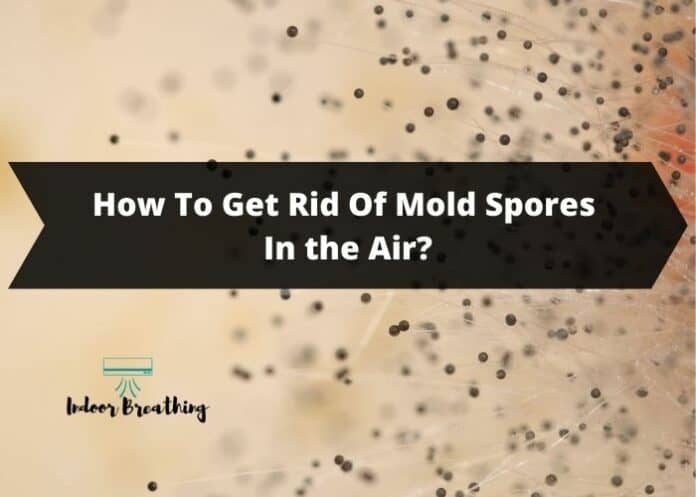Mold is a complete nightmare for many households. Spores in the air can also havoc on people’s allergies and cause various unpleasant symptoms, making them difficult to detect early and remove.
Moreover, they float in the atmosphere of every climate and are omnipresent.
Contrary to popular belief, some mold fungi, like penicillin, are pretty helpful to people. But unfortunately, even the healthiest individuals can get respiratory problems from some mold, such as common black mold, which is extremely dangerous to human health.
This article will discuss the nature of air mold growth and simple techniques to lessen, get rid of, and avoid mold spores in the air.
You can eliminate air mold spores by ensuring no leaks in your home—this could be leaking pipes or a faulty roof. If there is a leak, seal it immediately, so it doesn’t get worse and cause more damage.
Next, open your windows and doors so fresh air can come into your home.
Finally, keep an eye out for any spots where mold may grow inside or outside your home—these spots should be cleaned immediately with a bleach solution!
Table of Contents
What Are Mold Spores?
The reproductive component of a fungus is mold spores. They are minuscule, float through the air, and eat organic stuff like rotting wood or moist walls.
Spores will start germinating into mycelium after they have touched down on a suitable surface, and once this happens, it can spread until it completely covers an area with its web-like structure.
These spores are typically prevalent in the ambient air we breathe daily, including indoors. All indoor surroundings include some mold spores, but most people are unaffected.
However, they may induce respiratory symptoms like sneezing, coughing, runny noses, and irritation at sufficient concentrations. For the most part, they are not hazardous to people. More severe reactions may occur in those who are allergic to mold.
How Do You Know If You Have Mold Spores In the Air?
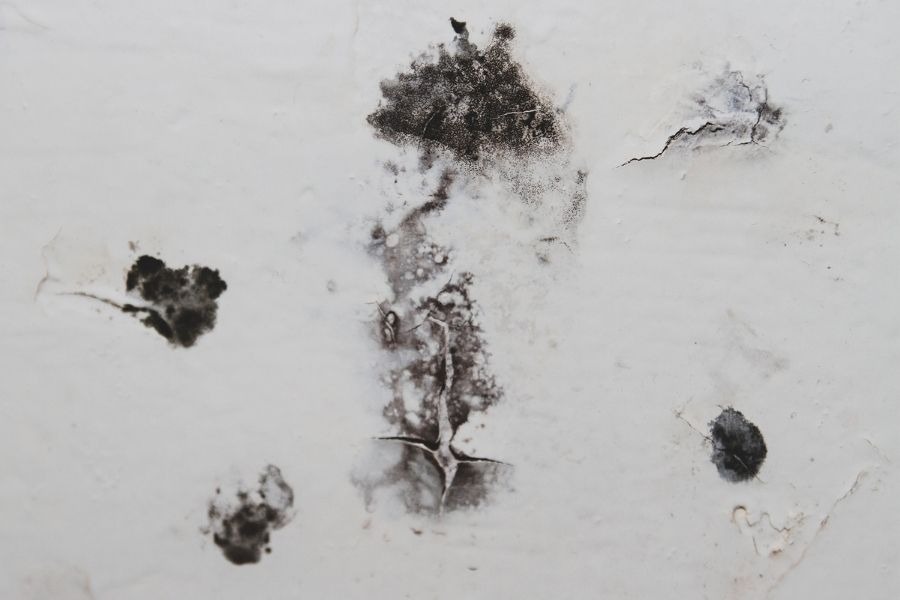
A reliable mold detection kit is required to test for mold spores in the air you breathe.
There are many places to get mold test kits, including home improvement stores and online merchants, but it is necessary to know that not all test kits are created equal. Some are only intended to check for the presence of mold on surfaces.
Additionally, if you smell musty but don’t see any noticeable mold, you can still have mold growing as a black, white, or brownish coating.
Therefore, it is wise to conduct mold testing in the following areas since these are some of the most frequent places for mold to develop undetected:
· In the back of the refrigerator
· Under cardboard or newspaper stacks
· Plumbing lines can be found in wall stud areas behind the drywall
· Beneath sinks
· The wallboard surrounding the dripping windows
· In ducts for ventilation
· A moist carpet that was formerly under there
· Among the acoustic ceiling tiles’ reverse side
· Any drywall that has been submerged behind
How Long Do Mold Spores Stay In the Air?

Mold spores can linger in the air for a very long time, especially if mold is present in your home, hasn’t been completely eradicated, or has been disturbed.
Additionally, even if there is no mold in your home right now, mold spores can still spread far and wide by sticking to people or animals or entering through ventilation. Once inside, they can easily apply and attach to damp locations that are left untreated.
Minimizing the possibility of persistent mold spores will also be aided by maintaining good air circulation and checking the air quality.
Can You Remove Mold Spores From the Air?
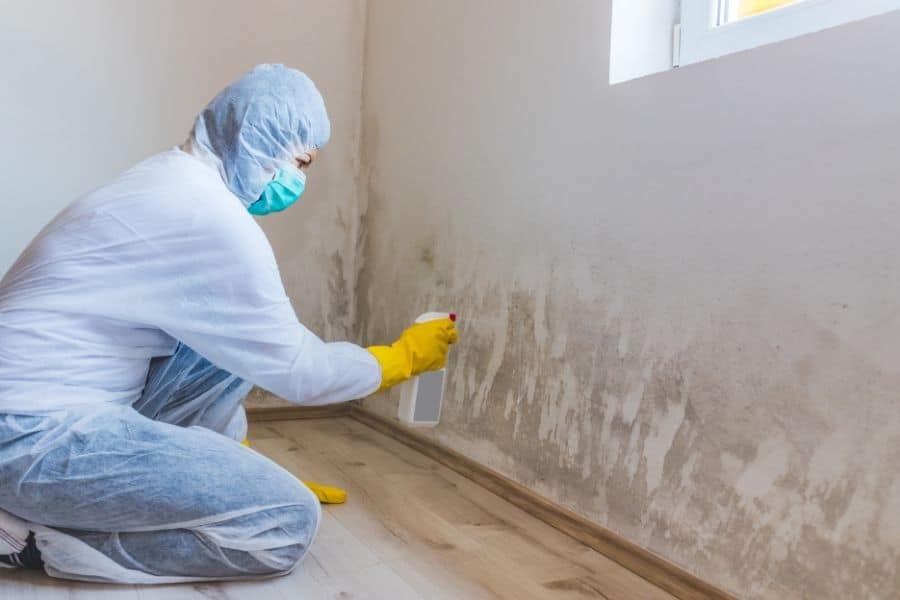
Mold spores cannot ultimately be removed from your home because they are a natural and significant component of our environment.
They don’t pose a health risk, though, until they start to disperse and turn into mold widely. Because of this, if you have a mold spore problem, you probably also have a moisture problem, creating the perfect conditions for dangerous mold levels to develop.
Most of the extra mold spores should be removed by:
Install an Air Purifier
Air purifiers function by trapping and eliminating dangerous pollutants in your house, so using one to abolish mold spores in the air is one of the important ways to get the issue under control initially.
Ventilate Your Home
By sometimes letting in some fresh air and ensuring that humid areas like the kitchen, bathroom, basement, and attic have adequate fan ventilation, you can keep your home airy.
Change your HVAC filters for more efficient ones (HEPA)
HEPA filters, designed to catch far smaller contaminants like mold spores than most HVAC filters, can be a much safer option for people with respiratory problems.
However, your system should be tested for compatibility because they more severely restrict airflow.
How To Get Rid Of Mold Spores In the Air?
Here are five methods for getting rid of mold spores in your home’s air.
Eliminate Any Visible Mold
If you haven’t addressed the root of the issue, operating the fans and air conditioners in your home is a waste of time.
Most of these spores are given off by the mold developing inside your walls or in other unnoticed areas of your home.
You should arrange for a professional mold inspection to help you find and handle the situation if you feel a musty smell but are having trouble recognizing the mold.
If mold is found, you must take the appropriate action to remove it from your home.
Air Out Your Home
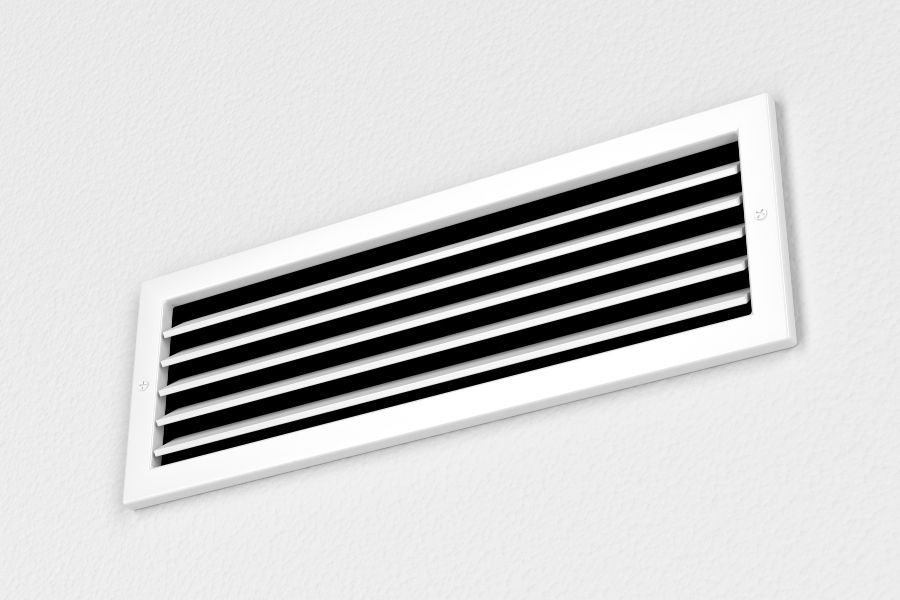
To limit the amount of moisture in a home’s humid spaces, such as the kitchen and bathroom, they must be kept dry and adequately aired.
Your home’s interior air quality is compromised by mold, which thrives in moist situations. You could improve the quality and circulation of the indoor air by installing trickling vents.
Poor ventilation is typically the cause of mold problems since the spores are kept indoors, where they have time to grow in the right conditions.
Repair Any Roof Leaks And Clean Your Roof’s Gutters
It’s crucial to approach the problem from the outside since mold can grow in gutters clogged with fallen leaves.
When mold spores are discharged into the air, they can enter your home through windows, doors, or air vents, lowering the quality of the air you breathe.
In addition, your roof may leak if your gutters are clogged or broken. Clear out the dirt and dead leaves from your gutters to avoid such problems.
Install Filters On The Air Conditioners
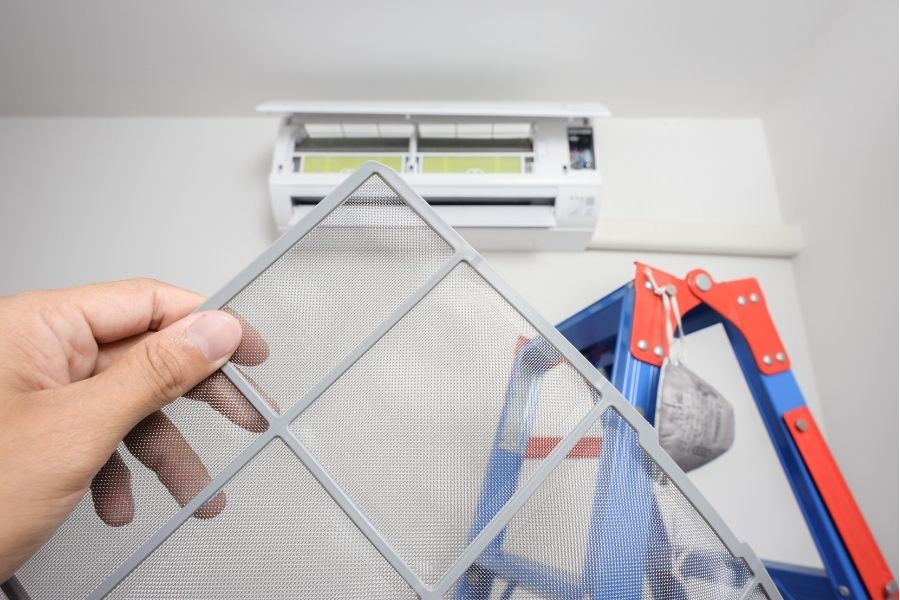
It’s most likely that mold spores are entering your home from the outside if you don’t have any mold yet see signs of it in the air.
Installing HEPA filters on your air conditioning units will help trap any mold spores in the air being circulated to avoid this from happening.
Unfortunately, since air conditioning units help circulate air between the indoor and outdoor environments, they can also let in mold spores, compromising indoor air quality.
To replace the filters or clear your air conditioners of any mold spores that may have become trapped, it’s also crucial to periodically arrange a professional cleaning.
Deal with the Issues in Your Home
Unlike other rooms in your home, the bathroom, kitchen, and basement need to be kept as dry as possible to prevent mold growth.
Look for any indications of plumbing leaks, flooding, or an abundance of water that could promote mold formation.
Do not dry your garments inside as this may increase humidity, which will encourage mold growth. Precautions include turning off any sources of moisture that can cause mold issues and are part of purifying the air for mold spores.
Can Mold Be Filtered Out Of the Air?
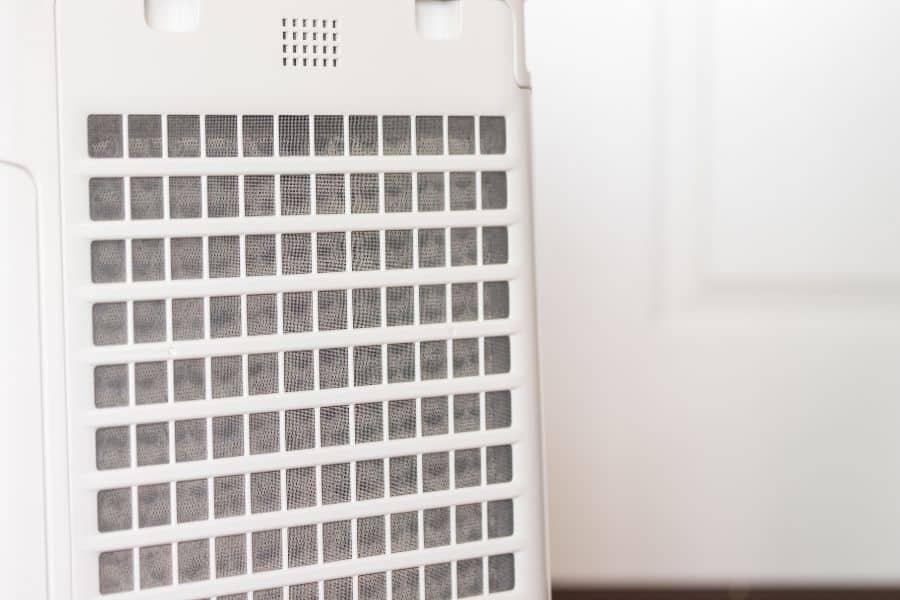
By removing mold spores from the air, air purifiers can stop them from increasing and spreading throughout your house.
Additionally, air purifiers are an excellent technique to prevent the spread of airborne mold particles, even though they won’t treat active mold on surfaces.
Furthermore, an air purifier will help catch mold spores that enter your home before they have a chance to fall on surfaces where they can grow and cause difficulties if you don’t already have a mold problem but are worried that it might become one.
If you have mold in your house, you should use an air purifier with conventional surface treatments to stop the spread of mold spores to other locations.
What Naturally Kills Mold Spores?
Hydrogen peroxide
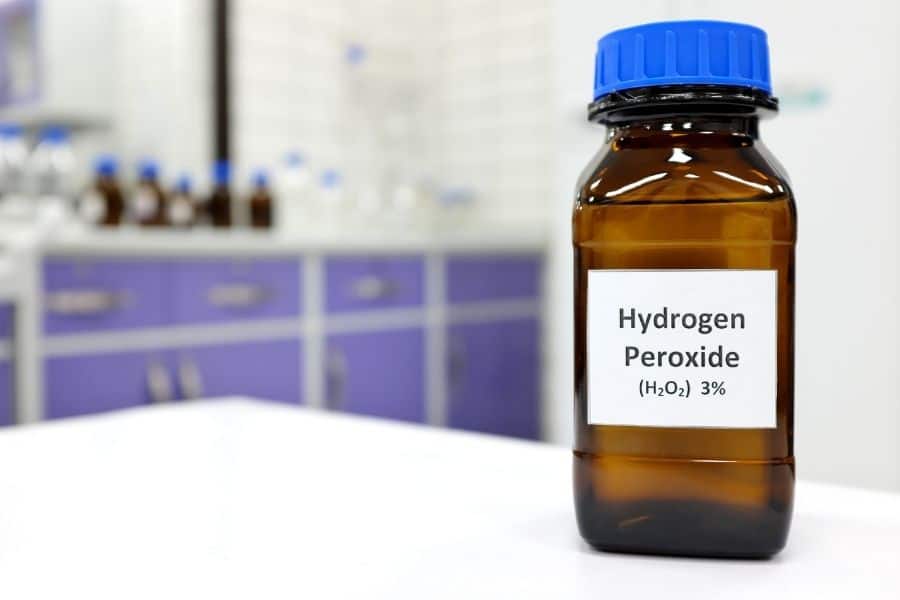
This antifungal and antibacterial treatment is most likely already in your medication cabinet.
Mold-killing natural cleaning products using hydrogen peroxide are pretty efficient. Use them to clean the surfaces of your walls, bathrooms, and kitchen counters!
Vinegar
In addition to natural cleaning, disinfecting, and deodorizing, vinegar also destroys a wide variety of mold.
Use genuine white vinegar that is not diluted (adding water will make it less effective). Look for a cleaning solution with a minimum acidity of 5% or one with a minimum edge of 6%.
Baking Soda
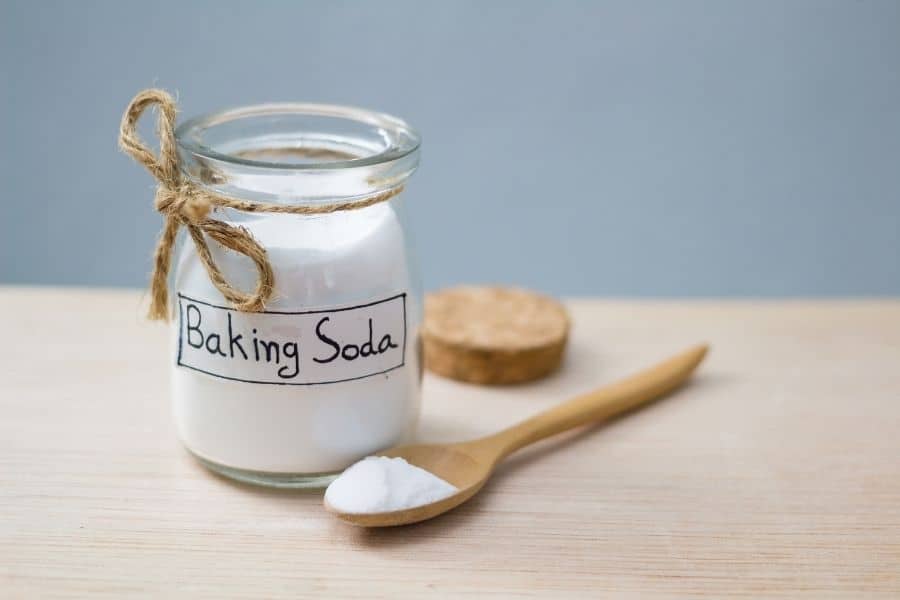
There are many valuable applications for baking soda around the house. Use it to eliminate awful fridge smells, alleviate heartburn, and fight mold.
First, spray away after adding 14 teaspoons to a spray bottle filled with water. When you’re through, scrape each surface with a scrub brush to eliminate the mold and baking soda buildup.
Essential oils
Use tea tree oil, cinnamon oil, clove oil, or thyme oil to ward off mold. Mix a teaspoon of your preferred oil in a spray container with a cup of water to kill mold and stop its spores from returning.
Lemons
Lemons are a common home item that eliminates mold and leaves surfaces clean. To employ this technique, squeeze the juice from a few lemons over the afflicted regions, let it sit for five to ten minutes, and then wipe the spots down with a moist cloth.
How Mold Spores Affect Your Health?
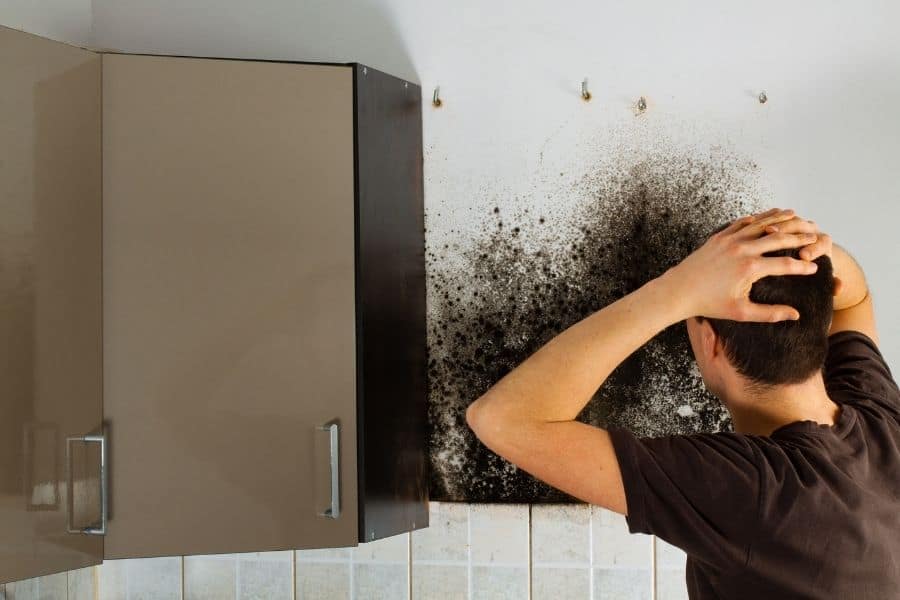
The symptoms of allergies, including watery eyes, runny noses, sneezing, itching, coughing, wheezing, difficulty breathing, headaches, and weariness, can be brought on by exposure to mold spores.
In addition, a person’s sensitivity may arise with repeated contact with mold, leading to increasingly severe allergic reactions.
Infants and children, the elderly, patients with impaired immune systems, and those who already have respiratory disorders like allergies and asthma are among the populations that are most at risk.
What Happens If You Are Exposed To Mold Spores?
There are many potential health impacts from exposure to moldy and wet conditions or none at all. Molds can irritate certain people. These persons may experience symptoms from mold exposure such as runny nose, wheezing, red or itchy eyes, or skin.
Some people may experience more stringent reactions, such as asthma or mold allergies. Workers exposed to a lot of mold at work, like farmers who handle moldy hay, may experience severe reactions. Fever and breathing difficulties are examples of severe reactions.
Can Mold Spores Kill You?
Although all molds, including black mold, can create poisons, mold exposure rarely results in death. Instead, mold spores emitting and moving through the air expose people to it. True, some people are more susceptible to mold than others.
Additionally, sleeping in a room with mold and mildew is also not good. Any interior mold exposure should be a cause for concern, but mold in your bedroom is hazardous because you spend so much time there and breathe it in while you sleep.

